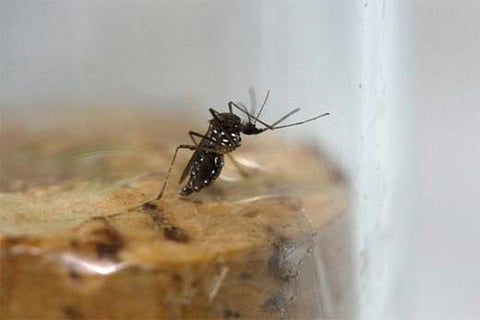

KATE GOLEMBIEWSKI
Every single mosquito that’s ever bitten you has been female. For them, a meal of blood is the ultimate girl dinner. Only females have mouth parts capable of piercing skin. But insects found trapped in amber, described in a study published Monday in the journal Current Biology, suggest that male mosquitoes may have once drunk blood, too.
When small animals or plants get stuck in gooey tree resin, they can be preserved if the resin hardens into amber. “In Lebanon, I have found some 450 different outcrops of amber, which is a lot for a small country,” said Dany Azar, a palaeontologist at the Nanjing Institute of Geology and Palaeontology and Lebanese University, and an author of the paper.
Lebanese amber is rich in preserved fossils, called inclusions, and dates to around 125 million years in the early Cretaceous period. In addition to being the age of the dinosaurs, it was also a time when flowering plants were becoming more widespread. Dr. Azar says he studies inclusions with the aim of understanding how flowering plants and pollinator insects have evolved together.
He collected the amber specimens in this study about 15 years ago in central Lebanon, but he thought they belonged to a group of insects that he didn’t focus on, so Dr. Azar didn’t prioritise them for study. But while polishing one of the specimens to a thin slice that could be examined under a microscope, he was taken aback.
“To my big surprise, I said, ‘Oh, gosh, this is a mosquito,’” Dr. Azar said. His co-author and former doctoral adviser, André Nel, of the National Museum of Natural History in Paris, confirmed that two of Dr. Azar’s amber specimens appeared to be the oldest known fossils from the mosquito family, with sharp, elongated mouth parts covered in tiny toothlike bristles. Further examination of the insects yielded another surprise.
“I said, ‘André, I didn’t drink anything, but I’m seeing something bizarre here — these are males,’” Dr. Azar said.
The insects had pincerlike organs called claspers on their abdomens, which are used to hold onto females during mating. The presence of these claspers meant that Dr. Azar and Dr. Nel had stumbled upon a seeming impossibility: male mosquitoes with mouth parts made for bloodsucking.
Modern male mosquitoes live off nectar and plant juices. (Most of the time, so do females: They only drink blood when they need extra protein to produce their eggs.) It’s long been thought by scientists that mosquitoes and their biting fly cousins evolved from plant-eating ancestors, and that females later evolved to have the ability to drink blood.
“We think now that, originally, the mosquito could be bloodsucking,” Dr. Azar said. “With the appearance of the flowering plant, this function could be just forgotten later on during the evolution of these insects.”
The idea that these ancient male mosquitoes fed on blood was “interesting and fascinating and controversial,” said Dale Greenwalt, a paleobiologist at the Smithsonian National Museum of Natural History.
After all, feeding on blood is a riskier strategy than sipping nectar because it comes with the threat of being swatted — one reason modern female mosquitoes only feed on blood when they need it for reproduction.
Golembiewski is a journalist with NYT
The New York Times